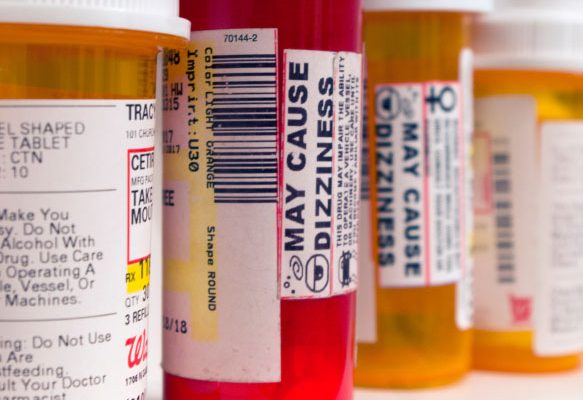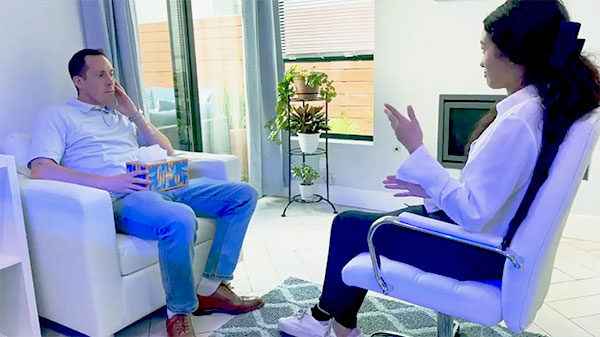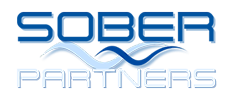Opioid Addiction Treatment
Orange county opioid addiction treatment
Opioid addictions are regarded as one of the toughest substance use disorders to overcome. Their addictive properties are higher than virtually any other drug known to man.
Recovering from opioid addiction by oneself is extremely difficult for even the strongest wills. Most medical professionals and recovering opioid addicts recommend getting professional help.
Our Huntington Beach residential-inpatient addiction treatment center is just two blocks from the sand. This beautiful beachside location gives the perfect ambiance conducive to recovery.

Our addiction specialists are top-tier with well over a hundred years of experience between them. Our clinical psychologist Dr. Wayne, Lead Counselor and Consultant Dr. McMahon, Psychiatrist and Medical Director Dr. Thankachen as well as our large team of therapists, nurses, and case managers work together developing highly effective and catered plans for each addicted individual that walks through our doors.
Read more below to see more for general information about treatment for opioid abuse or enter your information the contact form to get started on a recovery program today!

The Orange County Opioid Epidemic
Unfortunately, Orange County has been battling a seemingly ever-growing opioid abuse problem. If you take a look at the County’s opioid overdose and death rates from 2005 to 2015, you’ll notice that emergency department visits and opioid abuse/dependence have been on a steady rise.
Central OC Cities surrounding our Huntington Beach Rehab saw a 58% increase in opioid-related emergency visits. There’s a possibility that this increase is partially due to the growing popularity of dangerously strong opioids (like fentanyl) cut into street opioids marketed as heroin.
Our Huntington Beach Rehab has seen this first-person as most of our patients come from Orange County. However, our treatments have a high rate of success, aiming to be a solution to the problem.
Understanding Opioids
Opioids come in a wide variety of forms, but the dependencies they cause all produce similar euphoric effects and withdrawal symptoms. Some drug addictions start as prescription pain relievers for anything from surgeries to chronic pain. The World Health Organization lists a few of them as essential medicines, including fentanyl as a transdermal patch for cancer pain.
Despite their highly addictive and euphoric properties, prescription opioids will always be around in some form. The reality is that they do serve a purpose in medicine, but there will always be a number of people who misuse opioids.
Their effects make people feel happy and relaxed. They slow things down a bit and generally give the user the sense that everything is good. Side effects include respiratory depression (slowed breathing), sluggishness, disorientation, constipation, and nausea.

We keep throwing the term opioid around because it’s the more general term for the alkaloid class of drugs that attach to opioid receptors. The term opioids encompass opiates, semi-synthetic opioids, and fully-synthetic opioids.
The term opiates exclusively refer to “naturally occurring” opioids such as morphine, codeine, thebaine, and other alkaloids found in raw opium. Semi-synthetic opioids are typically more potent than opiates and directly derived from opiates.
Then, there are fully-synthetic opioids that have the potential to be even stronger all of the priorly listed drugs. They’re entirely created in a lab with chemicals. These drugs include dangerously potent fentanyl and the various analogs of it that are even more hazardous.
Though synthetic opioids include scary drugs that have severe side effects, there are ones that are quite useful. Synthetic opioids have a much more extensive range of potential properties than opiates and semi-synthetic opioids.
Buprenorphine, methadone, naloxone, naltrexone, and others can be useful in treating opioid use disorders as they don’t produce the same euphoric effects and respiratory depression as you would see in heroin. Because of this difference, doctors may prescribe these drugs to replace problematic drugs and, over time, lower mental addiction associated with drug use.
Anyone who uses opioids for more than a couple weeks will begin to develop some degree of chemical dependency. That dependency varies significantly on the specific opioid, dosage amount, and duration of usage.
Depending on the drug’s duration of effects, opioid withdrawal typically hits within the first 24 hours after the last dose. These early-stage withdrawals include:
- Muscle aches
- Anxiety
- Runny nose and eyes
- Cold sweats
- Restlessness and inability to sleep
The next stage of withdrawal includes worsening of the prior listed symptoms as well as more severe symptoms. They typically start after 24 hours of the last dose and include:
- Abdominal cramping
- Diarrhea and dehydration
- Nausea and vomiting
- Increased blood pressure and heartbeat
The Orange County Opioid Epidemic
Our treatments for opioid addiction include standard substance abuse and mental health service administration. These services include things like medication-assisted treatment, behavioral therapy, dual-diagnosis treatment, and group therapy/support.
Our Huntington Beach opioid treatment center prepares for opioid addiction in all its forms:
Medication-Assisted Treatment
Medication-Assisted treatment is a popular treatment used by addiction clinics. When addressing opioid addiction, less euphoric medicines like buprenorphine can replace the problematic drug. Because these medicines are less euphoric, they prepare the mind for a life without constant urge to get high. Buprenorphine is often paired with naloxone to lessen euphoria further and block the effects of problematic drugs in case of a relapse.
Naloxone is another MAT drug that completely blocks the effects of other opioids so that a user cannot relapse or overdose. It even blocks the effects of alcohol. It’s an excellent option for those who continuously fail to stop using.
And while we mostly do not recommend methadone, it may be useful for severe opioid use disorders when a user needs some euphoric feeling. It at least allows the addict to live a productive life and moves usage in the right direction. However, once chemically dependent on methadone, it’s brutally hard to get off, causing withdrawal that lasts weeks.
Behavioral Therapy
Behavioral therapy helps patients understand their problematic habits and avoid triggers that lead to substance abuse. The idea is that we learn self-destructive and unhealthy behaviors, so they can potentially be unlearned as well. There are tons of different approaches to behavioral therapy, and they apply to most mental health disorders.
When a dual-diagnosis of another mental health disorder is present with a substance use disorder, behavioral therapy can help two-fold. Many addictions are present with co-occurring disorders, and that’s why any treatment plan that doesn’t include behavioral therapy is merely lacking.
Group Therapy and Group Support
Group therapy and group support are highly beneficial for recovering addicts because it allows them to relate to others. By sharing their story and listening to another’s, they can better understand how addiction manifests itself. Also, having a support system that understands their mental health issue gives them an outlet they wouldn’t have otherwise.
